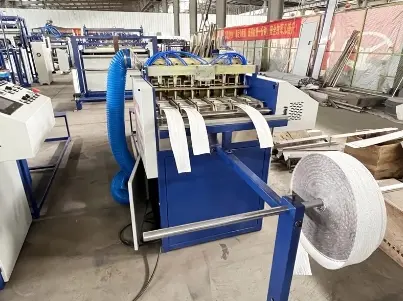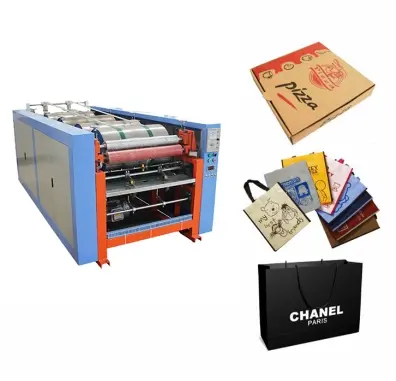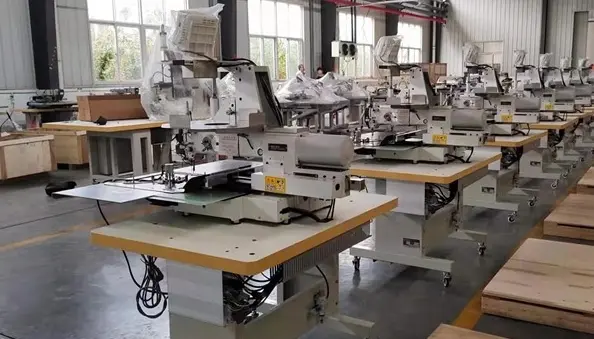In industrial packaging, Flexible Intermediate Bulk Containers (FIBCs) have become an essential tool for transporting and storing bulk materials like chemicals, food products, minerals, and pharmaceuticals. Commonly known as bulk bags or big bags, FIBCs are strong, flexible containers capable of carrying large quantities of material. However, the manufacturing of FIBCs requires a variety of auxiliary machines to ensure the bags are produced efficiently, accurately, and with high quality. These auxiliary machines play a crucial role in streamlining production processes and enhancing the quality of the final product.
This article explores what FIBC auxiliary machines are, their functions, and how they contribute to the FIBC production process.
What Are FIBCs?
Before diving into the auxiliary machines, it’s important to understand what FIBCs are. FIBCs are made from woven polypropylene and are designed to transport and store loose materials in large quantities. Depending on the application, FIBCs can vary in size, capacity, and structural design. They are widely used in agriculture, chemicals, construction, and food processing because of their durability, cost-effectiveness, and versatility.
The production of FIBCs involves several stages, including fabric weaving, cutting, printing, and assembling the bags. To facilitate this process, a range of auxiliary machines is required. These machines ensure that each production stage is carried out with precision and efficiency.
Types of FIBC Auxiliary Machines
- Cutting Machines
Cutting machines are vital in the FIBC production process, as they handle the precise cutting of woven polypropylene fabric into sheets of the desired size. These machines are highly automated and use computer-controlled systems to ensure accuracy. Proper cutting is essential for maintaining the structural integrity of the FIBCs and cutting machines make it easier to create multiple bags with consistent dimensions.
Some cutting machines also come with hot cutting options, which help to seal the edges of the fabric, preventing fraying and ensuring clean cuts that make the sewing process easier. By reducing material waste and increasing production speed, cutting machines contribute significantly to the overall efficiency of FIBC manufacturing.

- Printing Machines
FIBCs often need to be customized with logos, product information, handling instructions, or safety warnings. This is where printing machines come in. Printing machines designed for FIBC production can print high-quality images and text on the polypropylene fabric. These machines are equipped to handle large sheets of fabric and can print multiple colors, providing a cost-effective way to brand and label the bulk bags.
In addition to aesthetics, printing is crucial for regulatory compliance in some industries, such as chemicals or food packaging, where clear labeling is essential for safety and traceability. FIBC printing machines ensure that these labels are applied accurately and in line with the necessary standards.

- Sewing Machines
Sewing is one of the most critical stages in the FIBC manufacturing process. FIBC sewing machines are designed to stitch various parts of the bulk bags together, including the body, lifting loops, and bottom panels. These machines use heavy-duty needles and thread to sew the durable polypropylene fabric, ensuring that the bags are strong enough to hold and transport large quantities of materials.
Modern sewing machines for FIBC production often come with programmable features that allow for different stitching patterns and reinforcements, depending on the design and weight capacity of the bags. This automation improves the consistency of stitching, reduces labor costs, and increases production speed.

- Automatic Webbing Cutting and Loop Attaching Machines
FIBCs typically have lifting loops made from polypropylene webbing, which are attached to the corners of the bags. These loops allow for easy lifting and transportation of the bags using forklifts or cranes. Auxiliary machines for cutting and attaching webbing ensure that the loops are cut to the correct length and securely stitched onto the bags.
Automatic webbing-cutting machines improve the accuracy and speed of this process, while loop-attaching machines ensure that the loops are sewn onto the bags in a uniform and secure manner. This is particularly important for ensuring the bags’ load-bearing capabilities and safety during handling.
- Liner Insertion Machines
In some applications, especially in the food, pharmaceutical, and chemical industries, FIBCs require an additional inner liner made from polyethylene or other materials to protect the contents from contamination or moisture. Liner insertion machines automate the process of inserting these liners into the bags, reducing manual labor and ensuring that the liners fit perfectly.
These machines are critical in ensuring that the inner liners are applied properly without tearing or misalignment, thus maintaining the hygiene and integrity of the bulk materials being transported or stored.
- Filling and Weighing Systems
FIBC auxiliary machines also include systems for filling and weighing the bags. These systems ensure that the bags are filled with the correct amount of material before being sealed. Automatic filling machines can be programmed to fill the bags to a specific weight, improving efficiency and reducing errors.
Weighing systems are often integrated with filling machines to provide real-time feedback, ensuring that each bag is filled to the correct capacity. This helps companies maintain consistency in their product offerings and avoid overfilling or underfilling, which can lead to wastage or customer dissatisfaction.
Why Are Auxiliary Machines Important in FIBC Production?
FIBC auxiliary machines play a crucial role in enhancing the efficiency, precision, and quality of the production process. By automating various tasks like cutting, printing, sewing, and filling, these machines reduce manual labor, minimize errors, and increase production capacity. This allows manufacturers to produce large volumes of FIBCs in less time while maintaining high standards of quality and safety.
Moreover, the use of auxiliary machines ensures consistency in production. Each FIBC produced has the same dimensions, load capacity, and quality, which is vital for industries that require bulk packaging solutions that meet specific standards and regulations.
Conclusion
FIBC auxiliary machines are essential components in the production of high-quality, reliable bulk bags. By automating key stages of the manufacturing process, these machines help improve efficiency, reduce waste, and ensure that FIBCs meet the needs of various industries. As demand for FIBCs continues to grow, auxiliary machines will remain at the forefront of innovation, helping manufacturers keep up with market demands while maintaining the highest levels of quality and safety.
Post time: Sep-05-2024

